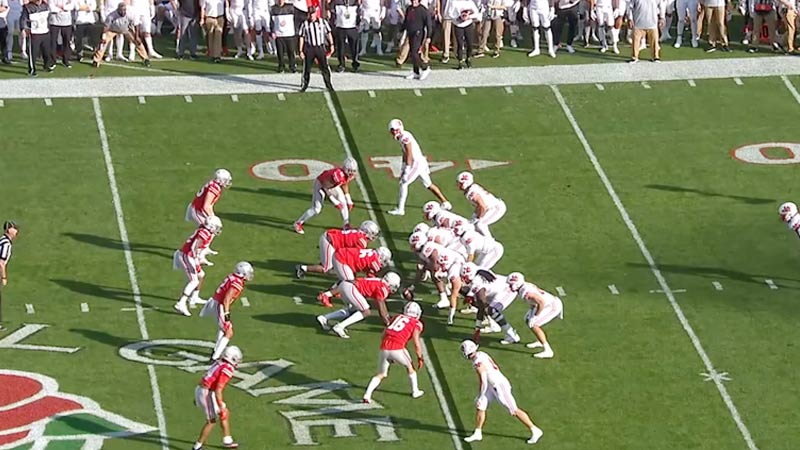College football bowl games are not just thrilling sporting events; they are also lucrative business that significantly impacts the financial landscape of colleges and universities.
Each year, top-tier college football programs compete in bowl games, generating substantial revenue and showcasing their talents on a national stage.
In this blog post, we dive into the financial aspects of college football bowl games to uncover the financial gains colleges make from these high-profile postseason contests.
Join us as we explore the revenue streams, economic impact, and financial benefits that football bowl games bring to participating colleges.
How Much Do Colleges Make From Football Bowl Games?
Football bowl games are not only a cherished tradition but also a lucrative venture for college football programs. These postseason contests provide an opportunity for teams to showcase their talents on a national stage while generating significant revenue for their respective universities.
Bowl Game Payouts
Colleges selected to participate in bowl games receive substantial payouts from the bowl game organizers. The payouts vary depending on the bowl game’s prestige, viewership, and the participating teams’ success.
As of 2021-22, each conference receives $6 million from the College Football Playoff for each team selected for a semifinal game and an additional $4 million for each team that plays in a non-playoff bowl under the College Football Playoff.
Revenue Sharing
In addition to individual bowl game payouts, participating conferences often engage in revenue-sharing agreements. This means that a portion of the bowl game revenue is distributed among all the teams within the conference, regardless of their participation in a bowl game.
This revenue-sharing model helps sustain and strengthen college football programs across the entire conference.
Ticket Sales and Merchandise
Bowl games draw large crowds of fans eager to support their teams. Ticket sales for these games contribute significantly to the overall revenue generated.
Additionally, merchandise sales, including jerseys, hats, and other team-branded products, soar during bowl season, adding to the financial gains for the participating colleges.
The financial gains from bowl games not only support and elevate football programs but also contribute to the overall financial health of colleges and universities.
As a cherished tradition and a financial powerhouse, football bowl games remain a vital and celebrated aspect of the college football landscape.
Things That Affect the Earnings of Colleges From Football Bowl Games

College football bowl games offer a significant opportunity for colleges to generate revenue and bolster their financial standing.
Several factors influence the earnings of colleges from football bowl games, including various revenue streams, the landscape of bowl games, television broadcasting rights, sponsorships, and travel packages. Let’s explore these aspects in more detail:
Revenue Streams for Colleges
Bowl games provide colleges with multiple revenue streams. These include bowl game payouts, revenue-sharing agreements within their respective conferences, ticket sales, merchandise sales, and fundraising efforts.
The combination of these revenue sources contributes to the overall financial gains for colleges participating in bowl games.
The Bowl Game Landscape
The landscape of college football bowl games is diverse, ranging from prestigious College Football Playoff (CFP) games to various non-playoff bowl games.
The level of prominence and national attention a bowl game receives can impact the earnings of participating colleges. High-profile bowl games generally attract larger audiences, which translates to higher revenue potential.
Television and Broadcasting Rights
Television broadcasting rights play a crucial role in the financial success of college football bowl games. Networks pay substantial sums to secure the rights to broadcast these games to a broad audience.
The larger the TV viewership, the more valuable the broadcasting rights become, leading to increased revenue for the colleges and the bowl organizers.
Sponsorships and Partnerships
Corporate sponsorships and partnerships are another significant revenue source for colleges involved in bowl games. Companies seek to associate their brands with the prestige and excitement of college football, leading to lucrative sponsorships.
Bowl games offer exposure to a wide audience, making them attractive opportunities for sponsors and partners.
Travel Packages and Hospitality
Bowl games often entail fans traveling from across the country to support their teams. Colleges can capitalize on this by offering travel packages, including tickets, accommodations, and hospitality services.
These packages not only enhance the fan experience but also contribute to the overall earnings for the participating colleges.
The earnings of colleges from football bowl games are influenced by a combination of revenue streams, the prestige and prominence of the bowl game, television broadcasting rights, corporate sponsorships, travel packages, and merchandise sales.
Financial Benefits for Colleges from Football Bowl Games

Football bowl games offer numerous financial benefits for colleges, making them a lucrative venture that significantly impacts the financial health of participating institutions. Some of the key financial benefits for colleges from football bowl games include:
Increased Revenue Streams
Bowl games provide colleges with various revenue streams, such as bowl game payouts, conference revenue-sharing agreements, ticket sales, merchandise sales, and fundraising efforts. The combination of these revenue sources results in a substantial boost to the college’s financial resources.
National Exposure
Bowl games offer colleges valuable national exposure. The games are televised to a wide audience, giving the participating colleges increased visibility and brand recognition.
This exposure can lead to a rise in applications and enrollment, attracting prospective students from across the country.
Sponsorships and Partnerships
The prominence of bowl games attracts corporate sponsors and partners seeking to associate their brands with the excitement of college football. These sponsorships and partnerships provide colleges with additional revenue and promotional opportunities.
Alumni Engagement and Fundraising
Successful bowl game appearances create a sense of pride and excitement among alumni and fans. This boost in engagement often translates into increased donations and fundraising efforts, further supporting the college’s financial resources.
Economic Impact on Local Communities
Bowl games draw fans from all over the country, resulting in increased tourism revenue for the host city and local businesses. Hotels, restaurants, transportation services, and other establishments benefit from the influx of visitors during the bowl game festivities.
Recruiting and Retention Advantages
High-profile bowl game appearances can positively impact a college’s football recruiting efforts. The success and visibility of the program can attract top-tier athletes to join the team, strengthening the college’s football roster.
Conference Revenue Sharing
Participating in a prestigious bowl game can benefit the entire conference. Revenue-sharing agreements within conferences mean that a portion of the bowl game revenue is distributed among all member institutions, even those not directly involved in the bowl game.
Boost in Institutional Pride and Morale
Success in bowl games fosters a sense of institutional pride and morale among students, faculty, and staff. This positive atmosphere can lead to increased productivity and a stronger sense of community within the college.
The financial gains from bowl games not only support the college’s football program but also contribute to the overall financial health and reputation of the institution. As a prestigious aspect of college football, bowl games play a pivotal role in the financial success of participating colleges.
How is the Money Spend The Colleges Earn from Football Bowl Games?
The money earned by colleges from football bowl games is spent on various aspects that contribute to the overall functioning and success of the college’s athletic program and institution.
The allocation of funds can vary depending on the college’s priorities and financial needs. Some common areas where the money earned from football bowl games is spent include:
Athletic Program Budget
A significant portion of the funds is allocated to the college’s athletic program budget. This budget covers various expenses related to coaching staff salaries, athlete scholarships, team travel, equipment, and facilities maintenance.
Academic Scholarships
Colleges often use a portion of the revenue to support academic scholarships for students. This helps attract and retain top students and promotes academic excellence.
Facility Upgrades
Investing in athletic facilities is a common use of the funds. The revenue earned from bowl games may be used to improve and upgrade stadiums, training facilities, locker rooms, and other athletic infrastructure.
Coaching and Staff Development
Some funds are earmarked for professional development programs for coaches and staff. This ensures that the athletic program has well-trained and skilled personnel.
Student-Athlete Support Services
Colleges allocate funds to provide support services to student-athletes, including academic support, health and wellness programs, and counseling services.
Academic and Athletic Programs
The funds may be used to support a wide range of academic and athletic programs, including research initiatives, sports medicine programs, and community outreach projects.
Student Services
Some of the funds are directed towards student services, such as career counseling, campus activities, and student life programs, to enhance the overall college experience.
Debt Servicing and Financial Reserves
Colleges may allocate a portion of the funds to service any outstanding debt or to build financial reserves for future use.
Scholar-Athlete Awards
Colleges often recognize outstanding scholar-athletes by providing awards and incentives, encouraging academic achievement alongside athletic success.
Campus Infrastructure
In some cases, the revenue may be used to support campus-wide infrastructure improvements, benefiting both the athletic program and the entire college community.
It’s important to note that how the money earned from football bowl games is spent may vary from college to college, and decisions are made based on the institution’s priorities, financial strategy, and compliance with any applicable regulations.
FAQs
How do colleges earn revenue from football bowl games?
Colleges earn revenue from football bowl games through various streams, including bowl game payouts, television broadcasting rights, sponsorships, ticket sales, and merchandise sales.
How are bowl game payouts determined for colleges?
Bowl game payouts vary depending on the prestige of the bowl game and the participating teams’ success. The College Football Playoff (CFP) pays out substantial amounts, while non-playoff bowl games offer varying payout levels.
Do colleges share the revenue with conference members?
Yes, many conferences engage in revenue-sharing agreements. A portion of the bowl game revenue is distributed among all member colleges, ensuring financial support for the entire conference.
How do bowl games impact a college’s financial standing?
Bowl games can significantly impact a college’s financial standing by infusing revenue into athletic programs, academic scholarships, facility upgrades, and student services.
What economic impact do bowl games have on local communities?
Bowl games draw fans from across the country, leading to increased tourism revenue for the host city and local businesses, such as hotels, restaurants, and transportation services.
Wrapping Up
College football bowl games are a financial powerhouse that provides participating colleges with substantial revenue and national exposure. From bowl game payouts and broadcasting rights to sponsorships, the financial gains from football bowl games have a far-reaching impact.
The revenue earned from these postseason contests not only supports athletic programs but also contributes to academic scholarships, facility upgrades, and student services.
As we celebrate the excitement of bowl season, it’s essential to recognize the financial significance of these games, which strengthen the financial standing and overall success of colleges and universities. Best wishes.







